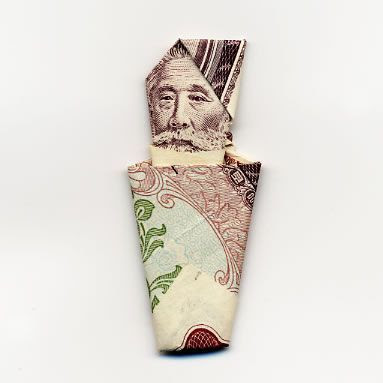
" The late magician and comedian Tommy Cooper made a lifelong virtue out of failure.
Discovering early on in his career that his magic tricks delighted audiences even when they went wrong, this manic Welshman turned his immensely popular stage performances into a feast of failed conjuring.
By supplementing this purposeful bumbling with the occasional failure-free trick, he also maintained the element of surprise.
For the rest of us, however, the idea of failure seems to be straightforward enough: mistakes, both large and small, are something to be avoided; the opposite of success; the currency of losers. They’re expected of the young as a necessary part of learning, of course, but increasingly less tolerated with the maturity that supposedly grants us enough experience and accumulated wisdom to succeed in life more or less flawlessly.
This in spite of the fact that creative luminaries such as Charles Rennie Mackintosh ("There is hope in honest error; none in the icy perfections of the mere stylist") and Samuel Beckett ("Try again. Fail again. Fail better.") continually remind us that we should perhaps openly embrace failure rather than assiduously avoiding it." written by Matt Soar
A private side note: when I read this piece, I was interested, it was concise and rather elegantly written. Duly impressed, and being naturally curious, I followed, like a dog to the bone, on to the authors web site.
A nice place, full of interesting projects, and excellent writing, where Mr. Soar dutifully included the notice - that he was a " Practicing Graphic Designer " .
I clicked enthusiastically to see his graphic design work, thinking that it likely was the equivalent of his written work, but, I must say, my jaw dropped in disappointment.
Clearly, what he had been so capable of writing - he could not, - to save his life poor fellow - visually design .... not even a little, .... his work was just so, C-.
It was uneventful in concept, familiar, you know, very typical derivative stuff, and was actually rather clumsy in its final execution. My immediate thought was, it all must must be a very outré hipster type joke. But, it wasn't. It was, just, what it was.
I'm not saying any of this to be nasty, and would never be so rude to him in person, but it was a good object lesson, and one worthy of passing on to you.
So do remember mes amis. It's never enough to just talk good design - except maybe at parties, with umbrella drinks and exchange students named Lars.
Eventually you've got to do the work, so, stop talking and Get to it !









